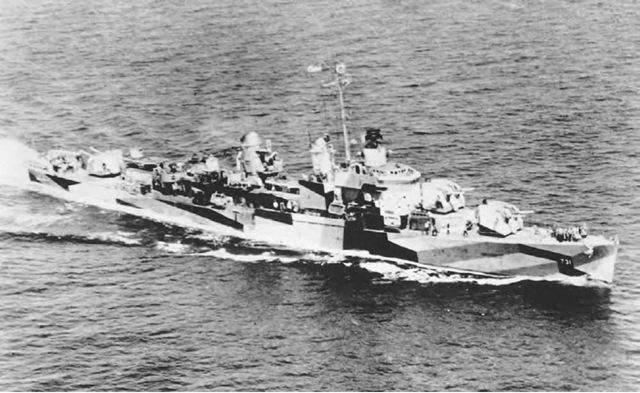On 31 July 1964, the United States navy destroyer Maddox began reconnaissance patrols off the coast of North Vietnam. Its presence in the Gulf of Tonkin was a major catalyst in bringing about overt U.S. military participation in Vietnam. At first, President Johnson politically profited from the Tonkin Gulf incidents, receiving a swell of support for his decisive action against supposed enemy aggression. Later, however, it became increasingly clear to the U.S. Congress and the American public that they had been misled about the events leading up to the alleged incident. Further, the uncertainty surrounding the Tonkin Gulf incidents soon began to feed into a popular conspiracy theory that the attacks were deliberately provoked in order to escalate U.S. involvement in the conflict.
On 2 August 1964, the first open confrontation between Democratic Republic of Vietnam forces and the U.S. military took place when three North Vietnamese patrol boats attacked the Maddox in the Gulf of Tonkin. When the Maddox returned fire two of the enemy vessels fled, while one was sunk. This attack by the North Vietnamese, however, was not unprovoked. The Maddox had been operating in North Vietnamese territorial waters (which the U.S. government denied), as part of a string of covert operations (the DeSoto Missions) against the North Vietnamese coast. While not technically an electronic espionage ship, the Maddox was outfitted with additional electronic surveillance equipment and personnel to monitor Democratic Republic of Vietnam (DRV) radio communications. These missions, part of a campaign code-named OPLAN-34A (Operations Plan 34 Alpha), consisted of attacks carried out by Republic of Vietnam (RVN) ships, but coordinated by the U.S. Navy. One of these missions included the shelling of two Democratic Republic of Vietnam coastal islands on the night/early morning of 30-31 July. On the following night, the Maddox approached one of the islands that had been shelled, apparently in an effort to ascertain the extent of enemy defenses for the planning of future missions. After being harassed by the Maddox, the North Vietnamese dispatched three torpedo boats that launched an unsuccessful attack.
USS Maddox (DD-731) at sea.
On 3 August 1964, the Maddox was joined by a second U.S. navy destroyer, the C. Turner Joy, and continued patrolling the Gulf of Tonkin. This assignment, however, was carried out much farther from the North Vietnamese coast than the Maddox’s mission of the night of 30-31 July. The following evening, while still operating in the gulf, radarmen aboard the C. Turner Joy picked up “blips” on their screens, which they interpreted as attacking enemy vessels, and fired at these supposed targets. The C. Turner Joy, however, was unable to pick up sounds of these ships with its sonar. On the USS Maddox, radar was unable to discern any enemy attackers, but sonar detected some noises that were interpreted as North Vietnamese torpedo motors. As the destroyers fired at “ghost” targets, carrier aircraft were also called in and two torpedo boat sinkings were claimed.
Captain John Herrick, patrol commander of the U.S. forces in the Gulf of Tonkin, immediately expressed doubts that an attack by the DRV had taken place. However, in Washington, intercepted North Vietnamese communications were examined and were said to provide evidence that an attack had been launched by the DRV. It seems likely, however, that the messages actually referred to the attack of 2 August, and were misinterpreted by U.S. officials including President Lyndon Johnson, who had been reassured by Pacific naval commander Admiral Ulysses S. Grant Sharp of the authenticity of the attack. In response, Johnson ordered retaliatory air strikes (Operation Pierce Arrow) against the North Vietnamese. The sixty-four sorties destroyed eight and damaged another twenty-four DRV gunboats and laid waste to 10 percent of North Vietnam’s oil storage facilities at a cost of two U.S. aircraft.
Johnson then requested the U.S. Congress to pass a joint resolution of support for South Vietnam. The Gulf of Tonkin resolution provided Johnson with a free hand to escalate U.S. military action in Southeast Asia that had already been rapidly increasing since 1961.

